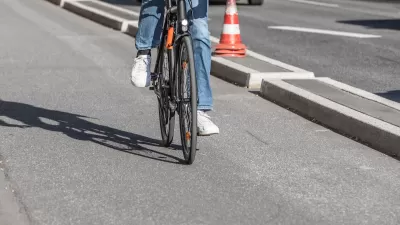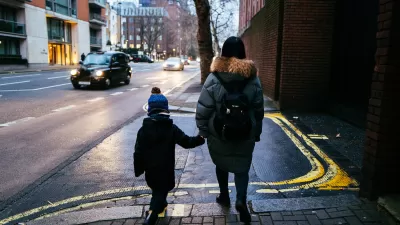New analysis of National Household Travel Survey data shows that the United States has a long way to go to overcome the dominance of the automobile for daily travel.

A new study published by the Journal of Transport & Health documents changes in walking and cycling for daily travel among U.S. residents between 2001 and 2017. The study, published in the March 2020 volume of the journal, uses National Household Travel Survey (NHTS) data to examine the extent to which rates of walking and cycling have changed along demographic, socioeconomic, and geographic lines.
According to the abstract and highlights from the study, the findings of the analysis include the finding that slightly more Americans are walking every day and cycling stayed steady. "There was substantial demographic, socioeconomic, and spatial variation for each year and over time," according to the post.
The lack of progress in substantially changing the numbers of walkers and bikers, however, inspires the author of the study to call on government officials to invest more in bike and pedestrian infrastructure.

Planetizen Federal Action Tracker
A weekly monitor of how Trump’s orders and actions are impacting planners and planning in America.

Map: Where Senate Republicans Want to Sell Your Public Lands
For public land advocates, the Senate Republicans’ proposal to sell millions of acres of public land in the West is “the biggest fight of their careers.”

Restaurant Patios Were a Pandemic Win — Why Were They so Hard to Keep?
Social distancing requirements and changes in travel patterns prompted cities to pilot new uses for street and sidewalk space. Then it got complicated.

Platform Pilsner: Vancouver Transit Agency Releases... a Beer?
TransLink will receive a portion of every sale of the four-pack.

Toronto Weighs Cheaper Transit, Parking Hikes for Major Events
Special event rates would take effect during large festivals, sports games and concerts to ‘discourage driving, manage congestion and free up space for transit.”

Berlin to Consider Car-Free Zone Larger Than Manhattan
The area bound by the 22-mile Ringbahn would still allow 12 uses of a private automobile per year per person, and several other exemptions.
Urban Design for Planners 1: Software Tools
This six-course series explores essential urban design concepts using open source software and equips planners with the tools they need to participate fully in the urban design process.
Planning for Universal Design
Learn the tools for implementing Universal Design in planning regulations.
Heyer Gruel & Associates PA
JM Goldson LLC
Custer County Colorado
City of Camden Redevelopment Agency
City of Astoria
Transportation Research & Education Center (TREC) at Portland State University
Camden Redevelopment Agency
City of Claremont
Municipality of Princeton (NJ)





























